Congenital Uterine Anomalies
Article Sections
Introduction
Congenital uterine anomalies (CUAs) result from abnormal formation, fusion, or involution of the müllerian ducts during fetal development. These anomalies are often asymptomatic but may cause obstetric and gynecological complications. They occur in approximately 5% of women, although prevalence is higher among women with infertility or recurrent pregnancy loss.
Embryology
During sexual differentiation in females (Figure 1), the müllerian (paramesonephric) ducts give rise to the fallopian tubes, uterus, cervix, and upper vagina (Figure 2). This process involves:
- Formation: The müllerian ducts develop as bilateral solid cords of tissue beginning at 6 weeks gestation.
- Fusion: The caudal portions of the müllerian ducts fuse laterally to form the uterus, cervix, and upper vagina by approximately 12 weeks gestation. The superior portions of the ducts do not fuse and give rise to the fallopian tubes.
Continue Learning with UWorld
Get the full Congenital Uterine Anomalies article plus rich visuals, real-world cases, and in-depth insights from medical experts, all available through the UWorld Medical Library.
Figures
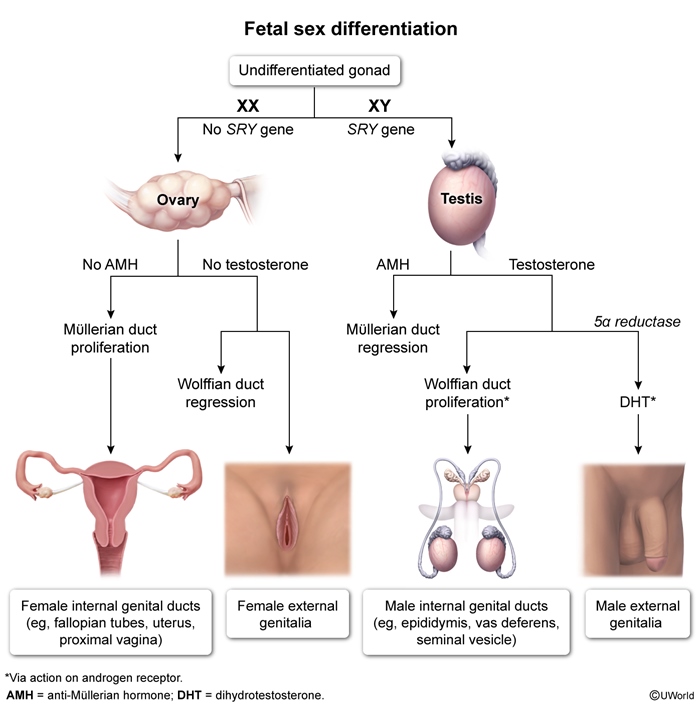
Figure 1
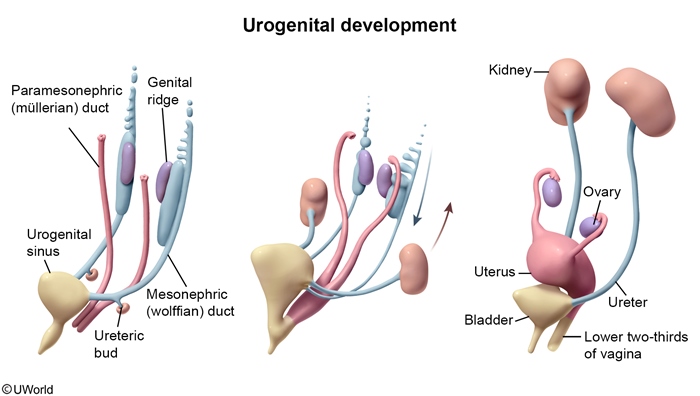
Figure 2
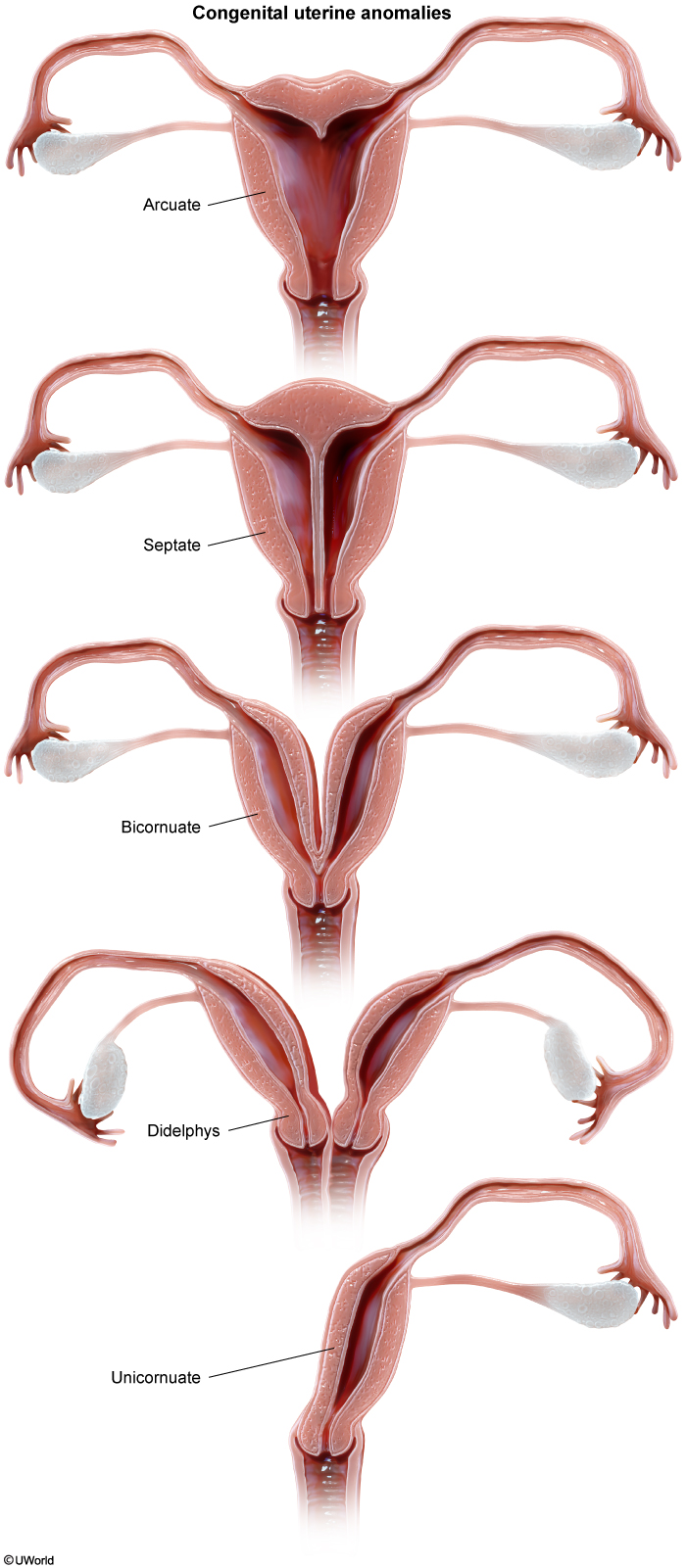
Figure 3
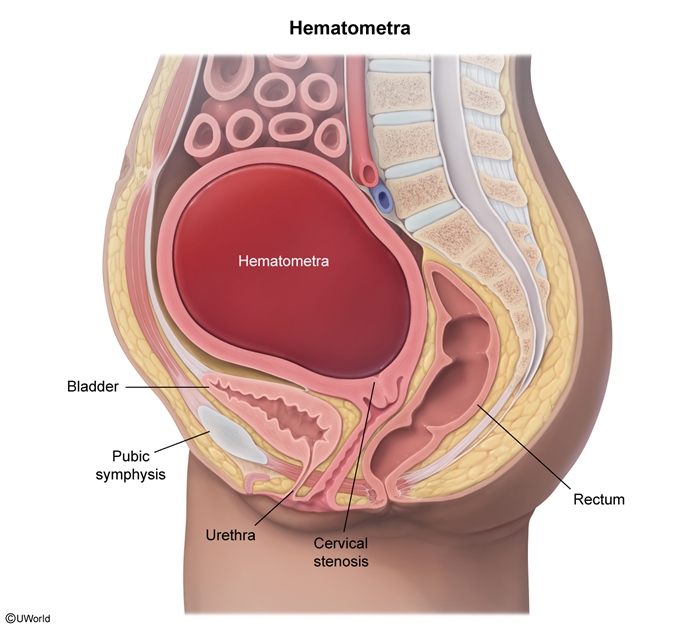
Figure 4
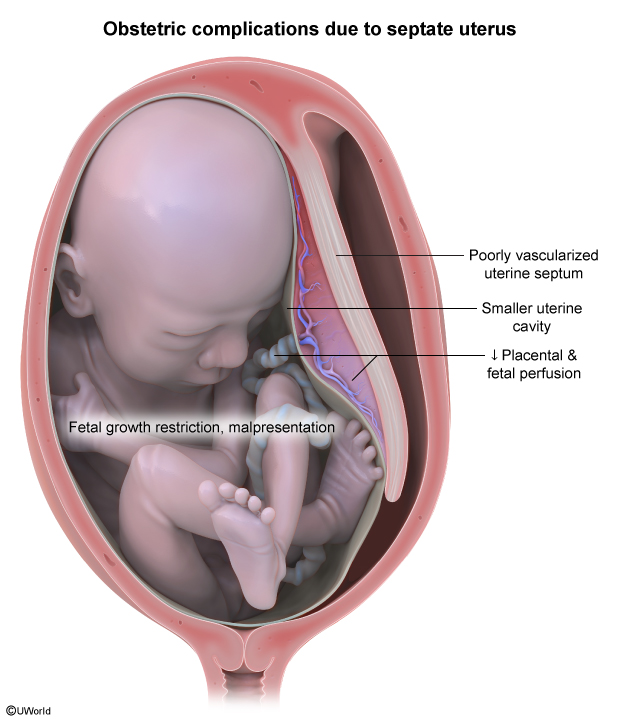
Figure 5

Figure 6